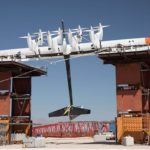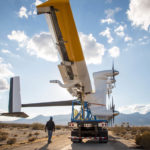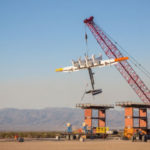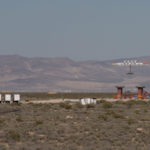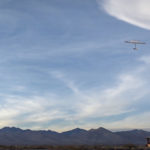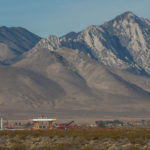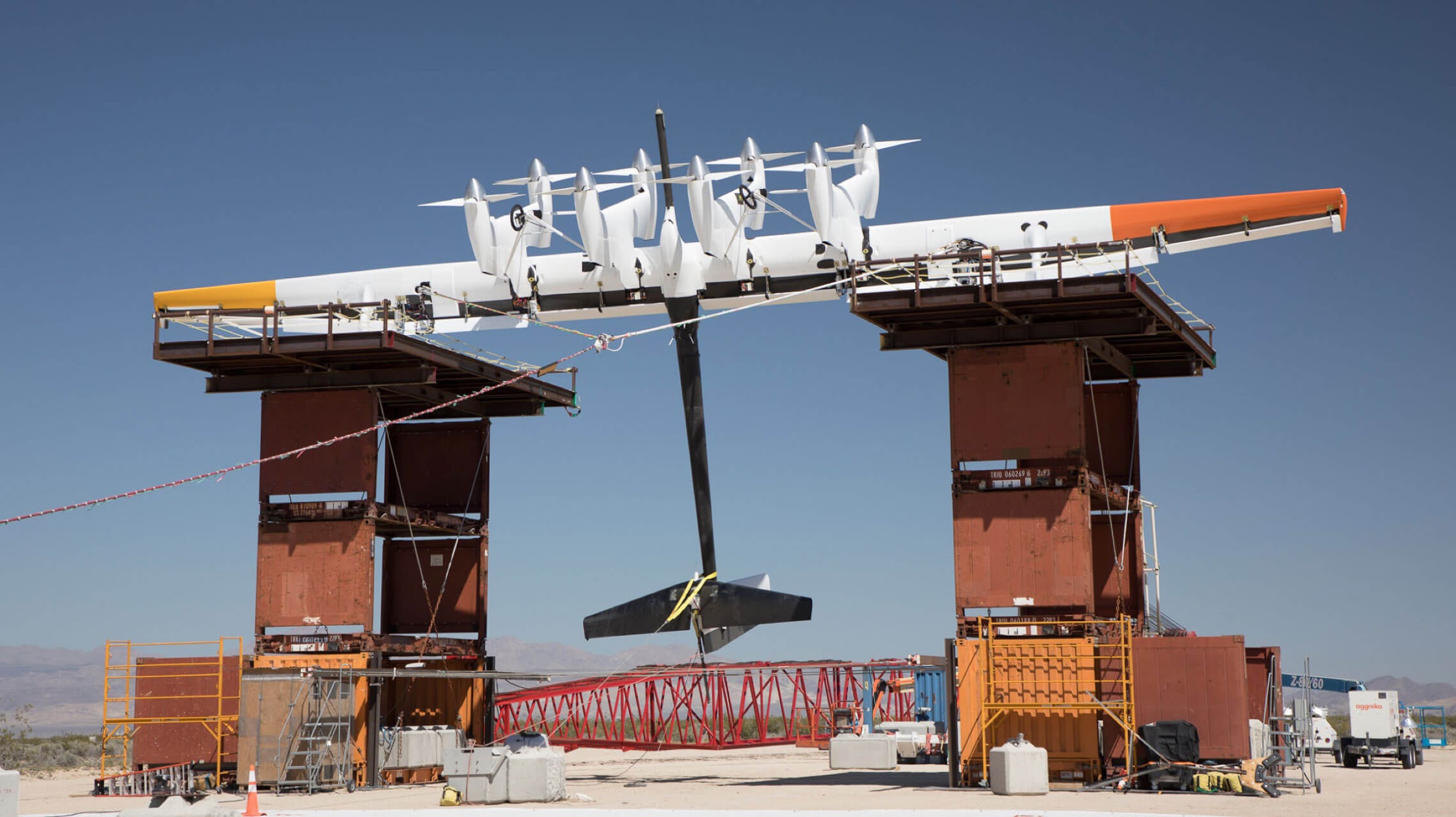
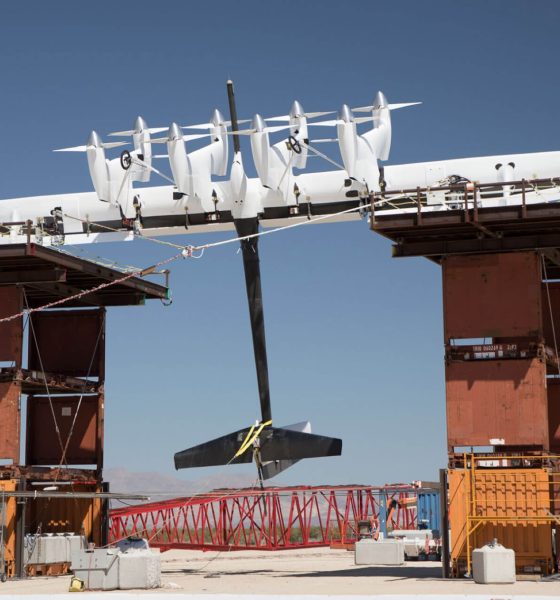
Energy
Google’s giant “kite” can generate wind energy from almost anywhere
A Google X division company named Makani has designed a giant “kite” that can generate enough wind energy to power about 300 homes. Named the “M600” after the 600 kW of electricity produced by its movement, the craft resembles a sport glider with two levels of multiple propellers on the front, more generally described as an aerodynamic wing. After more than ten years of development and a prototype test flight in 2016, M600 has begun full size testing in Hawaii this year to continue its journey towards becoming a portable power solution that can be brought anywhere with sufficient wind to propel it.
The functionality of M600 is fairly straightforward. After being connected to a 1400 foot high-strength tether, it uses 8 onboard motors to climb from a 15-foot base station to its determined altitude (about 1000 ft) with a small amount of voltage power. Then, it transitions into crosswind where it flies in 800 foot wide loops lasting 10-25 seconds each to generate maximum power via onboard computers guided by data from sensors, GPS, and an inertial navigation system.
The rotation of the 85 foot wide kite’s rotors drives magnet motors/generators on board, producing electricity that transfers down the tether where it can be connected to an energy grid. The electricity comes down in DC (direct current), but is converted to AC (alternating current) at its base station.
- The M600 wind power kite during testing in Hawaii. | Credit: Makani/X Development LLC
- The M600 wind power kite during testing in Hawaii. | Credit: Makani/X Development LLC
- The M600 wind power kite during testing in Hawaii. | Credit: Makani/X Development LLC
- The M600 wind power kite during testing in Hawaii. | Credit: Makani/X Development LLC
- The M600 wind power kite during testing in Hawaii. | Credit: Makani/X Development LLC
- The M600 wind power kite during testing in Hawaii. | Credit: Makani/X Development LLC
One of the needs driving Makani’s kite is accessing wind sources that aren’t practical or cost-effective in today’s markets. Its mass is about 10% of a conventional wind turbine with similar output thanks to the carbon fiber materials it’s primarily made from. The lighter, portable design of the M600 could help bring wind energy to areas devastated by natural disasters and places where coastal waters are too deep for other wind systems to sit on the seabed.
Google’s X division (under the broader parent company Alphabet Inc.) is a secretive development factory dedicated to radical innovations that solve the world’s toughest problems. It provided the initial funding for Makani’s kite technology as part of its 2007 RE<C initiative and officially graduated the company into X in 2013. As part of X, the company is working towards the one of the division’s missions of promoting global adoption of renewable energy and developing airborne wind energy technology.
Makani is not the only company developing flying wind generators. The “airborne wind energy” (AWE) industry is full of competitors developing their own versions. As a new clean energy technology, though, AWE companies face an uphill battle in becoming commercially viable due to research and development costs that take years, a problem faced by many new industries overall. However, as the technology comes to market and matures, AWE could follow the path forged by traditional turbine wind power which is now competitive with fossil fuels. A recent report by IDTechEx projected AWE will become a multi-billion dollar industry within 20 years.
The Makani team is continuing to develop more advanced versions of its wind energy kite while discussing the technical and economic integration aspects of the technology with industry experts. Initial ground and hover tests of the kite begun in Hawaii in August this year. In the coming weeks, the full 85-foot commercial version of the M600 will finally be tested.
Watch the below video to see the M600 prototype in action:

Cybertruck
Tesla updates Cybertruck owners about key Powershare feature

Tesla is updating Cybertruck owners on its timeline of a massive feature that has yet to ship: Powershare with Powerwall.
Powershare is a bidirectional charging feature exclusive to Cybertruck, which allows the vehicle’s battery to act as a portable power source for homes, appliances, tools, other EVs, and more. It was announced in late 2023 as part of Tesla’s push into vehicle-to-everything energy sharing, and acting as a giant portable charger is the main advantage, as it can provide backup power during outages.
Cybertruck’s Powershare system supports both vehicle-to-load (V2L) and vehicle-to-home (V2H), making it flexible and well-rounded for a variety of applications.
However, even though the feature was promised with Cybertruck, it has yet to be shipped to vehicles. Tesla communicated with owners through email recently regarding Powershare with Powerwall, which essentially has the pickup act as an extended battery.
Powerwall discharge would be prioritized before tapping into the truck’s larger pack.
However, Tesla is still working on getting the feature out to owners, an email said:
“We’re writing to let you know that the Powershare with Powerwall feature is still in development and is now scheduled for release in mid-2026.
This new release date gives us additional time to design and test this feature, ensuring its ability to communicate and optimize energy sharing between your vehicle and many configurations and generations of Powerwall. We are also using this time to develop additional Powershare features that will help us continue to accelerate the world’s transition to sustainable energy.”
Owners have expressed some real disappointment in Tesla’s continuous delays in releasing the feature, as it was expected to be released by late 2024, but now has been pushed back several times to mid-2026, according to the email.
Foundation Series Cybertruck buyers paid extra, expecting the feature to be rolled out with their vehicle upon pickup.
Cybertruck’s Lead Engineer, Wes Morrill, even commented on the holdup:
As a Cybertruck owner who also has Powerwall, I empathize with the disappointed comments.
To their credit, the team has delivered powershare functionality to Cybertruck customers who otherwise have no backup with development of the powershare gateway. As well as those with solar…
— Wes (@wmorrill3) December 12, 2025
He said that “it turned out to be much harder than anticipated to make powershare work seamlessly with existing Powerwalls through existing wall connectors. Two grid-forming devices need to negotiate who will form and who will follow, depending on the state of charge of each, and they need to do this without a network and through multiple generations of hardware, and test and validate this process through rigorous certifications to ensure grid safety.”
It’s nice to see the transparency, but it is justified for some Cybertruck owners to feel like they’ve been bait-and-switched.
Energy
Tesla starts hiring efforts for Texas Megafactory
Tesla’s Brookshire site is expected to produce 10,000 Megapacks annually, equal to 40 gigawatt hours of energy storage.

Tesla has officially begun hiring for its new $200 million Megafactory in Brookshire, Texas, a manufacturing hub expected to employ 1,500 people by 2028. The facility, which will build Tesla’s grid-scale Megapack batteries, is part of the company’s growing energy storage footprint.
Tesla’s hiring efforts for the Texas Megafactory are hinted at by the job openings currently active on the company’s Careers website.
Tesla’s Texas Megafactory
Tesla’s Brookshire site is expected to produce 10,000 Megapacks annually, equal to 40 gigawatt hours of energy storage, similar to the Lathrop Megafactory in California. Tesla’s Careers website currently lists over 30 job openings for the site, from engineers, welders, and project managers. Each of the openings is listed for Brookshire, Texas.
The company has leased two buildings in Empire West Business Park, with over $194 million in combined property and equipment investment. Tesla’s agreement with Waller County includes a 60% property tax abatement, contingent on meeting employment benchmarks: 375 jobs by 2026, 750 by 2027, and 1,500 by 2028, as noted in a report from the Houston Business Journal. Tesla is required to employ at least 1,500 workers in the facility through the rest of the 10-year abatement period.
Tesla’s clean energy boom
City officials have stated that Tesla’s arrival marks a turning point for the Texas city, as it highlights a shift from logistics to advanced clean energy manufacturing. Ramiro Bautista from Brookshire’s economic development office, highlighted this in a comment to the Journal.
“(Tesla) has great-paying jobs. Not just that, but the advanced manufacturing (and) clean energy is coming to the area,” he said. “So it’s not just your normal logistics manufacturing. This is advanced manufacturing coming to this area, and this brings a different type of job and investment into the local economy.”
Energy
Tesla and Samsung SDI in talks over new US battery storage deal: report
The update was related by industry sources and initially reported by South Korean news outlets.

Recent reports have suggested that Tesla and Samsung SDI are in talks over a potential partnership to supply batteries for large-scale energy storage systems (ESS).
The update was related by industry sources and initially reported by South Korean news outlets.
ESS batteries to be built at Samsung’s Indiana plant
As noted in a report from Korea JoongAng Daily, the demand for energy storage systems has been growing rapidly in North America, thanks in no small part to the surge in AI investments across numerous companies. With this in mind, Tesla has reportedly approached Samsung SDI about a potential battery supply deal.
The deal is reportedly worth over 3 trillion Korean won (approximately $2.11 billion) and will span three years, according to The Korea Global Economic Daily. A battery supply deal with Samsung SDI could make sense for Tesla as the company already has a grid-scale battery, the Megapack, which is perfect for industrial use. Samsung SDI could simply supply cells for the EV maker.
Production of the batteries would reportedly take place at Samsung SDI’s joint venture factory with Stellantis in Indiana, which is currently under construction. Samsung SDI recently announced plans to use part of that plant’s EV lines to produce cells for ESS, with a targeted capacity of 30 GWh by the end of next year.
Tesla and Samsung’s partnership
At present, only a handful of manufacturers, including Korea’s LG Energy Solution, Samsung SDI, SK On, and Japan’s Panasonic, are capable of producing energy storage-scale batteries domestically in the United States. A Samsung SDI official issued a comment about the matter, stating, “Nothing has been finalized regarding cooperation with Tesla.”
The possible energy storage system deal adds another layer to Tesla’s growing collaboration with Samsung, which is already in line as a partner in the upcoming production of Tesla’s AI5 and AI6 chips. Early sample manufacturing of the AI6 is expected to begin in South Korea, with mass production slated for Samsung’s Texas-based Taylor foundry when it starts operations.
The AI6 chip will power Tesla’s next wave of high-volume projects, including the Optimus humanoid robot and the autonomous Cybercab service. Musk has called the partnership with Samsung a “real collaboration,” adding that he personally plans to “walk the line” at the Taylor facility to speed up progress.
